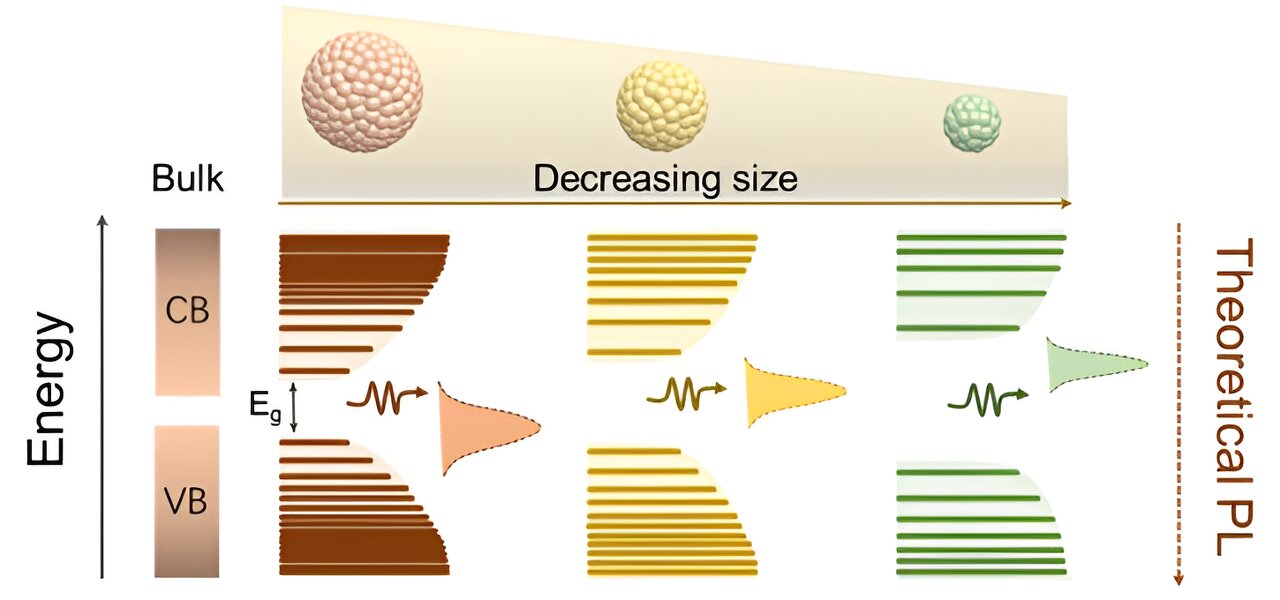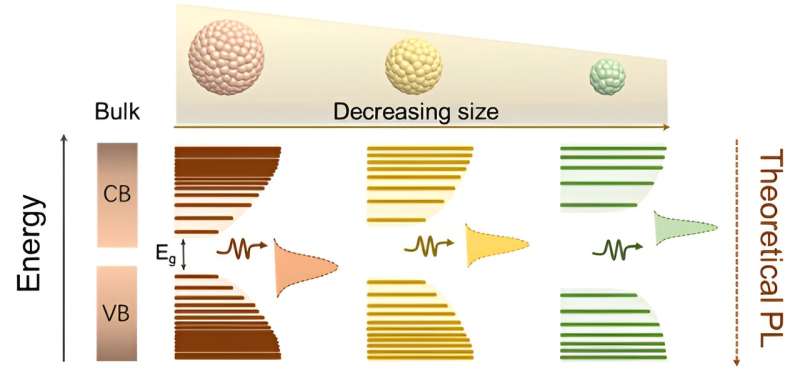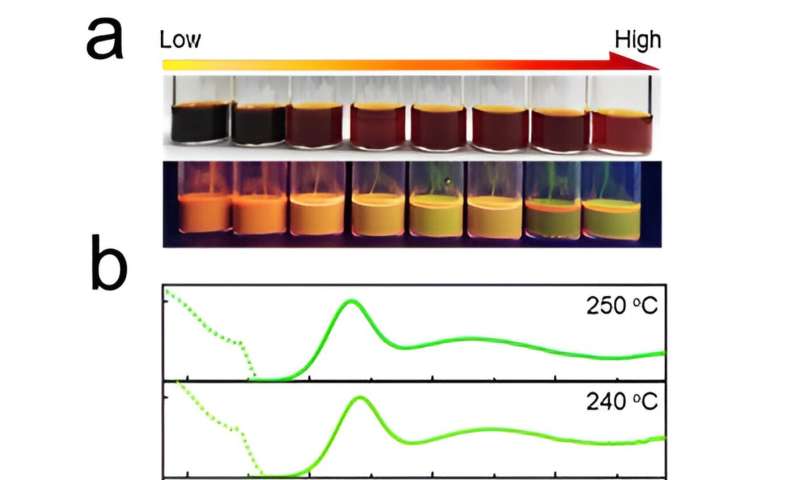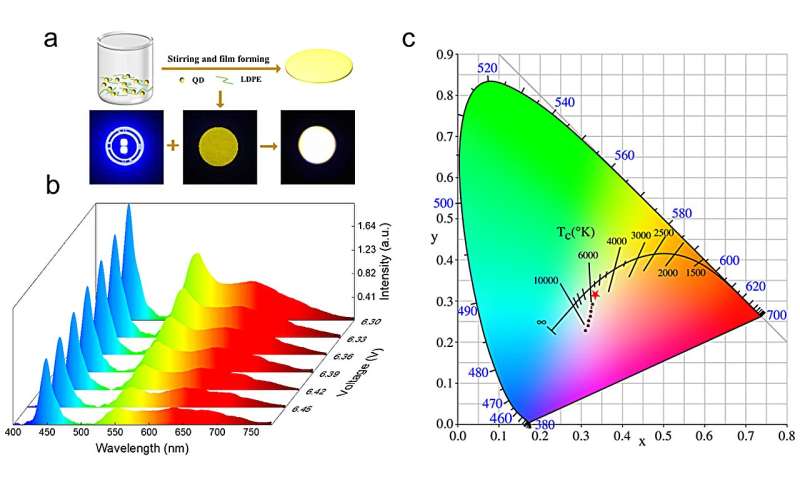

Semiconductor quantum dots (QDs) materials have shown great potential for applications in lighting and display fields due to their wide color gamut, adjustable emission wavelength, high quantum efficiency, high color saturation, and low processing cost. For example, QD materials based on cadmium and perovskite have made remarkable progress, but the use of toxic Cd and Pb has limited their further application.
The Restriction of Hazardous Substances (RoHS) regulation clearly limits the use of Cd and Pb in electronic products to less than 100 ppm and 1,000 ppm, respectively. Therefore, developing new environmentally friendly quantum dot material systems is of great significance.
In recent years, eco-friendly I-III-VI2 QDs, such as Ag-In-Ga-S (AIGS) QDs, have attracted widespread attention due to their large Stokes shift, controllable emission over the entire visible spectrum, and high photoluminescence quantum yield (PLQY).
They show great potential in the fields of lighting and display. Due to the diverse element composition of AIGS, it typically exhibits a broad emission spectrum in the visible range, accompanied by a strong bandgap main emission peak and a weak defect emission peak.
Currently, researchers mostly focus on narrowing the PL spectrum through core-shell structures or alloying to meet the requirements of display. However, the dual emission characteristic of QDs with a wide spectrum in white light applications has obvious advantages, allowing for the realization of single-material white light-emitting devices (WLEDs), avoiding the disadvantages of complex processes, self-absorption, and poor color rendering of multiple fluorescent powder compound white light.
Therefore, optimizing the wide-spectrum characteristic of AIGS QDs and achieving fine spectral tuning is crucial for studying the luminescence properties of AIGS and realizing high-quality WLEDs.
Based on this, Professor Song Jizhong from Zhengzhou University used the quantum confinement characteristic of quantum dot materials that is dependent on their size, and by temperature regulation of the nucleation and growth of AIGS QDs, controlled the size distribution of QDs crystals, thus adjusting their emission spectrum and achieved AIGS QDs with green-red dual emission characteristics. The paper is published in the journal Opto-Electronic Advances.
-

The optical properties of AIGS QDs with dual emission. (a) Photographs of the AIGS QDs synthesized at different temperature under room light (top) and UV irradiation (bottom). (b) Corresponding PL and UV-vis absorbance spectra were recorded with the excitation wavelength of 365 nm under different temperature. Credit: Opto-Electronic Advances (2024). DOI: 10.29026/oea.2024.240050
-

WLED based on dual-emissive AIGS QDs. (a) The schematic diagram of constructing dual-emissive AIGS QD-based white light-emitting diode and the corresponding optical photograph of the white-emitting device. (b) PL spectra of the WLED and (c) corresponding CIE chromaticity coordinates under different voltage. Credit: Opto-Electronic Advances (2024). DOI: 10.29026/oea.2024.240050
In this work, AIGS QDs were synthesized by one-pot thermal injection method, and the size of the crystal was controlled by temperature regulation.
At low temperature (180°C), smaller particles (with a size of 3.7 nm) were more easily formed, while at high temperature (250°C), the crystals tended to grow (with a size of 16.5 nm). At 220°C, AIGS QDs with two different size distributions (17 nm and 3.7 nm) were obtained, which resulted in a huge difference in their exciton emission peaks.
Finally, AIGS QDs with green-red dual emission (530 nm–630 nm) were achieved, and the dual-peak exciton luminescence characteristic was confirmed by temperature-dependent and excitation-dependent spectroscopy. This work provides a new perspective for studying the luminescent properties of the new AIGS QDs material system.
This broadband, bimodal emitting QDs have great potential in WLEDs, in this work, AIGS QDs with green-red dual emission were mixed with a polymer and pressed into a film, combined with a blue LED chip, successfully preparing a WLED with a chromaticity coordinate of (0.33, 0.31) and a correlated color temperature (CCT) of 5,425 K, a color rendering index (CRI) of 90, and a radiant luminous efficiency (LER) of 129 lm/W, which indicates that AIGS QDs have great potential for lighting applications.
More information:
Zhi Wu et al, Finely regulated luminescent Ag-In-Ga-S quantum dots with green-red dual emission toward white light-emitting diodes, Opto-Electronic Advances (2024). DOI: 10.29026/oea.2024.240050
Provided by
Compuscript Ltd
Citation:
Finely regulated luminescent Ag-In-Ga-S quantum dots with green-red dual emission toward white LEDs (2024, October 11)
retrieved 11 October 2024
from https://phys.org/news/2024-10-finely-luminescent-ag-ga-quantum.html
This document is subject to copyright. Apart from any fair dealing for the purpose of private study or research, no
part may be reproduced without the written permission. The content is provided for information purposes only.

